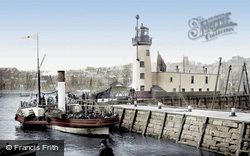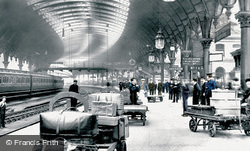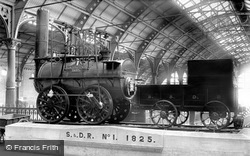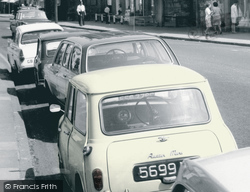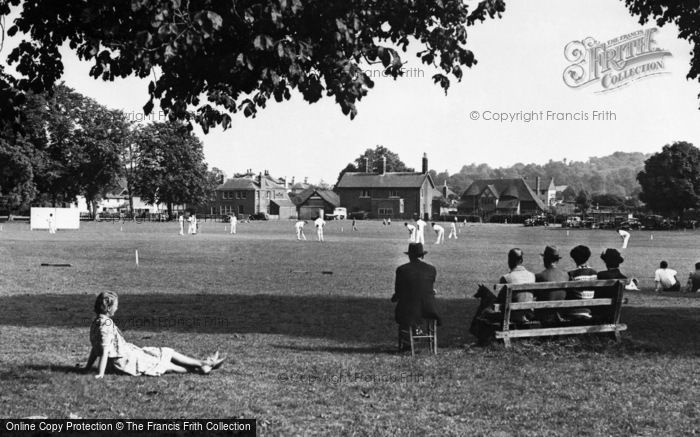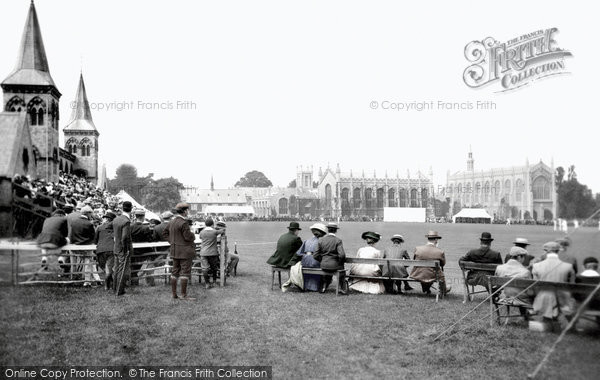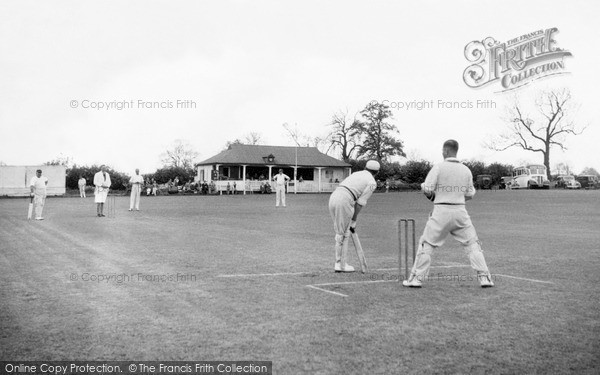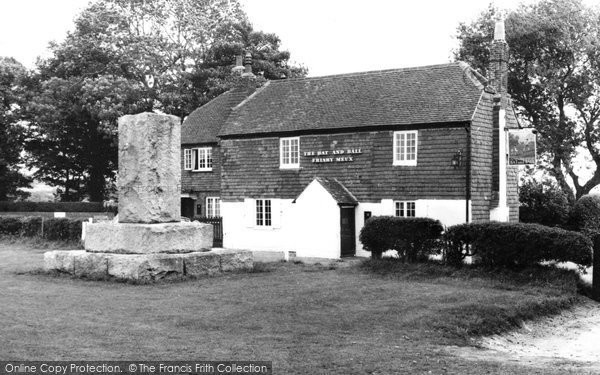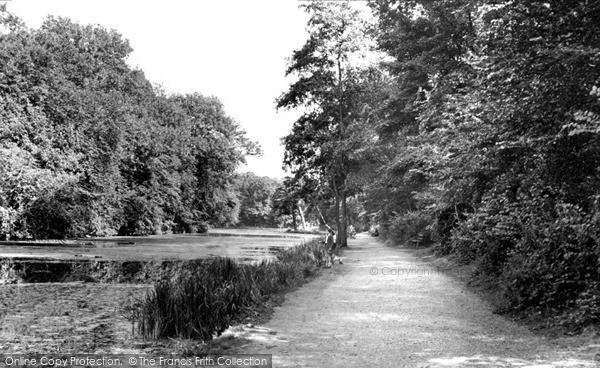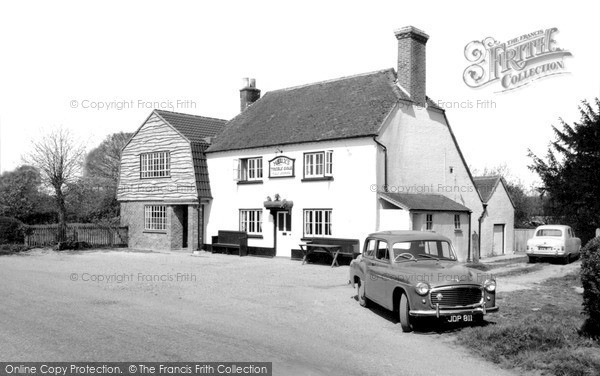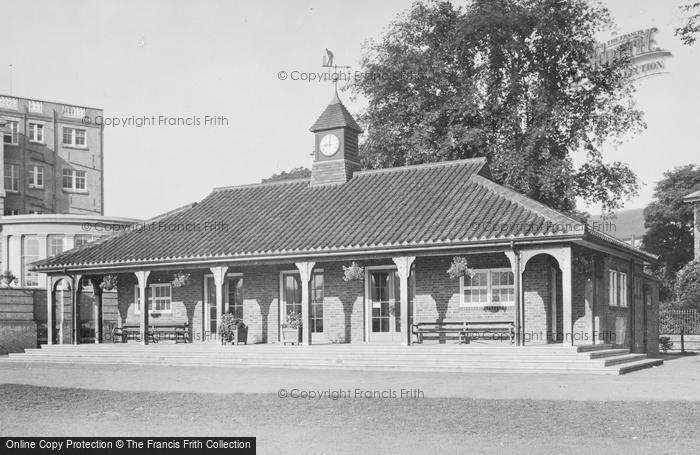Cricketing Memories
Published on
June 14th, 2023
As The Ashes begins, these nostalgic photos are a reminder of when no summer was complete without a game of cricket on idyllic village greens, urban cricket pitches or sandy beaches.
In this post, we present wonderfully nostalgic photographs of cricketing scenes and venues and memories of cricketing summers of the past.
Howzat! We hope you enjoy them!
A sizeable crowd are fully engrossed in the action of a cricket match on the playing fields of the school, against the backdrop of the buildings, all of which are contained on an 85-acre site. The crowded stand, erected in front of the yellow brick gymnasium with its two towers, indicates that this is probably a match between county teams held during the annual Cheltenham Cricket Festival, rather than one between Cheltenham College sides.
Even today the College boasts an annual summer cricket festival, in the best public school tradition. At the height of the British Empire, the colleges took in the children of military officers and civil servants posted to far-flung corners of Queen Victoria’s realm.
The cricket field is a focal point of village life, where summer upon summer old rivalries are played out. Here, winter game plans hatched in the local pub can produce unlikely heroes, or fall apart in minutes. This is the battlefield – a small, probably balding, grass square.
The Bat and Ball at Broadhalfpenny Down, near Hambledon in Hampshire is a holy of holies for cricket lovers. The pub stands opposite one of the oldest cricket pitches in the country and a huge granite monument bearing the inscription : "This marks the site of the ground of the Hambledon Cricket Club circa 1750-1787".
During cricket matches, the inn was used as the pavilion and clubhouse. The landlord of the inn during this time was Richard Nyren, the Cricket Club’s secretary and the formulator of many of the rules of the game still in use today.
It was at this ground in 1777 that Hambledon CC roundly beat an all-England team by an innings and 168 runs. It is said that the victorious team celebrated with a drink of punch ‘strong enough to make a cat speak’. In 1787, ten years after the Hambledon cricket team’s redoubtable victory, the Marylebone Cricket Club, the MCC, was formed by the then president of the Hambledon Cricket Club, the Earl of Winchilsea.
It was a long walk to Wanstead Park from where we lived as children. The six of us would always stay together making sure that we were all in sight of each other as Mum had instructed for safety. We would fish and paddle in the pond, after catching our little fish to take home for Mum to see we would have our picnic. It was then time for a game of cricket or football. Susan my sister and I would be put out as fielders, our brothers knew it would take us time to find the ball, allowing them more time for runs, then after a few winges I would be allowed to have a go at batting. It was my brother Daniel who taught me how to hold the bat, I soon got the hang of it. When the game of football began, it was not long before there was more than the six of us, we would have a full team, maybe more, what fun it was, we would always have a few scratches by the time the game was over. Daniel then would look for the time, as we were to be home by 4 o'clock. How quickly the time would go, we would change the water in the jars with hopes that the fish would still be alive when we got home for Mum to see. Then the long walk home.
Sporting side of things came around in the 1950's when, around the age of 17 or 18, I started playing football and cricket for the village. There was one chap I remember, Bill George, who never seem to stop moaning throughout the game and at times used to put me right off the game itself. In the 1950's, where one knew 'one's place' we were captained by a Mr Hale. I think he may have been an old public school chappie as he always called us by our surname and he himself was always referred to as Mr Hale. He was a very good batsman, I remember seeing him score a century against Redhill at the 'Ring', Earlswood. After a while I became wicket keeper but the number of 'extras' I conceded meant I usually needed to score at least 50 to offset the deficit, which was never on as I usually opened the innings and batted rather a la Boycott rather than a la Pieterson...
Born in Cambridge in 1882, Sir John Berry ‘Jack’ Hobbs, the Surrey and England batsman, was the world’s greatest cricket batsman of his time. Between 1905 and 1934 he played in 61 test matches and scored a record 61,237 runs. Perhaps his greatest innings at the Oval was against Australia in 1926, when he made a century to help bring back the Ashes to England.
The list of his batting achievements is extensive but here are a few highlights:
- he scored 197 centuries in first class cricket, the most by any player in any country to date;
- he is the oldest man in cricketing history to have scored a test match century (at the age of 46);
- in 1953 he became the first professional cricketer to be knighted;
- half his total of centuries were scored after the age of 40.
In the year 2000, Wisden selected him as one of the top five players of the 20th century. Hobbs’s Pavilion on Parker’s Piece in Cambridge (now a restaurant) honours the city’s sporting son – note the batsman weathervane!
This post has the following tags:
Nostalgia.
You may find more posts of interest within those tags.
Join the thousands who receive our regular doses of warming nostalgia!
Have our latest blog posts and archive news delivered directly to your
inbox.
Absolutely free. Unsubscribe anytime.

